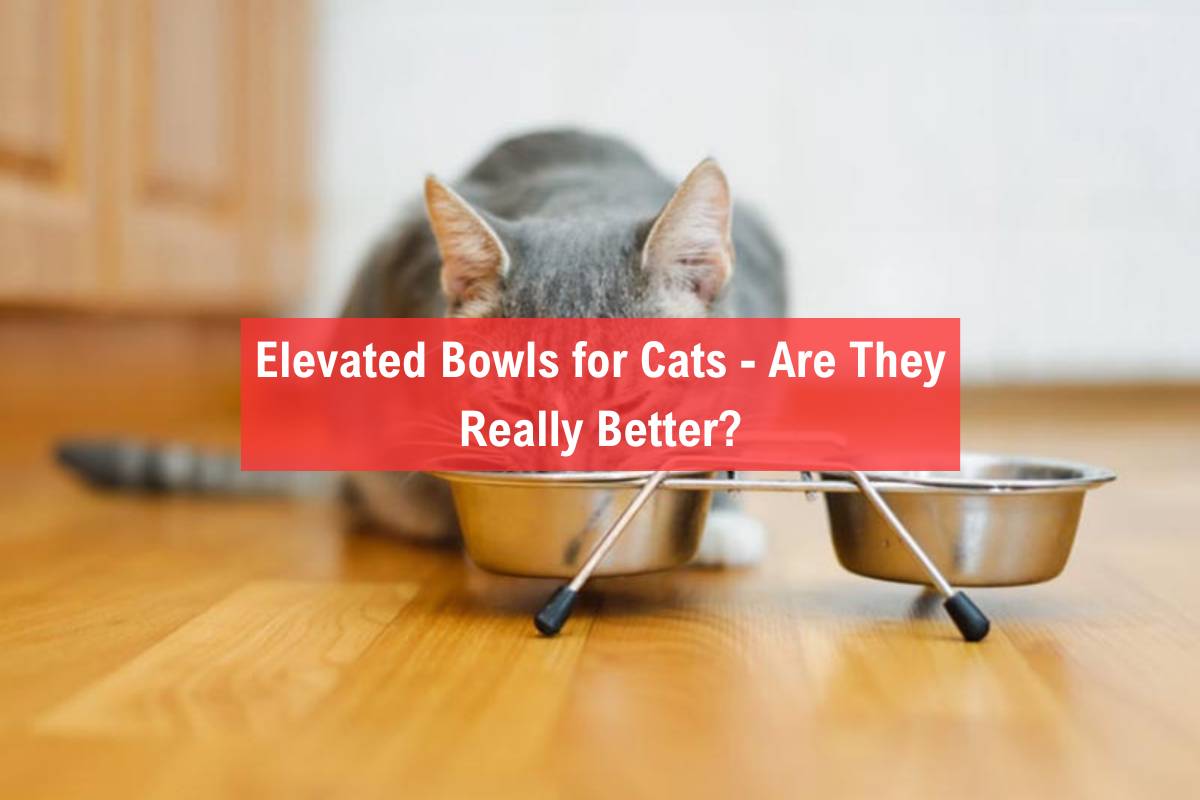As a loving cat owner, you are always looking for ways to improve your feline friend’s comfort and health. One question that might have crossed your mind is whether or not to elevate your cat’s bowls. In this article, we will explore the benefits of elevated cat bowls, factors to consider when choosing one, and some recommendations. So, let’s dive in!
What are Elevated Bowls for Cats?
Elevated bowls for cats are feeding bowls that are raised off the ground. They are typically made of plastic, ceramic, or stainless steel and come in different sizes and shapes. These bowls are designed to be at a height that is comfortable for cats to eat from without having to bend their necks too much.
Why Elevate Your Cat’s Bowls?
Comfort
Elevating your cat’s bowls can provide them with more comfort while eating. When the bowls are at a comfortable height, cats do not have to strain their necks or backs to reach their food and water. This can be especially beneficial for older cats, cats with arthritis, or cats with other joint issues.
Better Digestion
Elevating your cat’s bowls may also improve their digestion. When cats eat with their head down, they may swallow more air, which can lead to indigestion and bloating. By elevating their bowls, you can prevent this and improve their digestion.
Less Strain on Joints
As mentioned earlier, elevating your cat’s bowls can reduce strain on their joints. This is because when cats eat from bowls on the floor, they have to stretch their neck and back, which can cause discomfort or pain. By elevating their bowls, you can prevent this and make mealtime more comfortable for your cat.
The Pros and Cons of Elevated Bowls
Before deciding whether to switch to an elevated bowl for your cat, let’s weigh the pros and cons.
Pros:
- Improves posture: Elevated bowls promote a more natural and comfortable eating position for cats, which helps to improve their posture.
- Reduces neck strain: Cats who eat from low bowls may experience neck strain, especially if they have arthritis or other joint problems.
- Prevents whisker fatigue: Whisker fatigue is a condition that occurs when cats’ whiskers constantly touch the sides of their feeding bowl, causing discomfort and stress. Elevated bowls prevent this from happening.
- Keeps the feeding area clean: Elevated bowls can prevent food and water spills, which helps to keep the feeding area clean and hygienic.
Cons:
- Increased risk of vomiting: Some cats may be prone to vomiting after eating from elevated bowls, especially if they eat too fast. This is because the raised height can cause them to swallow air as they eat.
- Not suitable for all cats: Some cats may prefer to eat from low bowls, and switching to an elevated bowl may cause them discomfort or stress.
- Potential for bacterial growth: Elevated bowls can be more difficult to clean than low bowls, and if not cleaned properly, can lead to bacterial growth and infections.
When Should You Consider Using an Elevated Bowl for Your Cat?
There are a few instances where using an elevated bowl for your cat may be beneficial:
- If your cat has arthritis or joint problems, elevated bowls can help to reduce neck strain and make eating more comfortable.
- If your cat is prone to whisker fatigue, elevated bowls can help to prevent this condition from occurring.
- If your cat is a messy eater, elevated bowls can help to keep the feeding area clean and hygienic.
How to Choose the Right Elevated Bowl for Your Cat
When choosing an elevated bowl for your cat, there are a few things to consider:
- Height: The height of the bowl should be comfortable for your cat to eat from without having to strain their neck.
- Size: The size of the bowl should be appropriate for your cat’s food and water needs.
- Material: Choose a material that is safe, durable, and easy to clean. Stainless steel is a popular choice for its durability and ease of cleaning.
Conclusion
In conclusion, elevated bowls for cats have their pros and cons. While they can promote better posture, reduce neck strain, and prevent whisker fatigue, they may not be suitable for all cats and can pose risks of bacterial growth and vomiting. If you’re considering using an elevated bowl for your cat, consider their individual needs and preferences and choose a bowl that is the right height, size, and material. Ultimately, the goal is to provide your cat with a comfortable and
Share this article:
Recommended:

